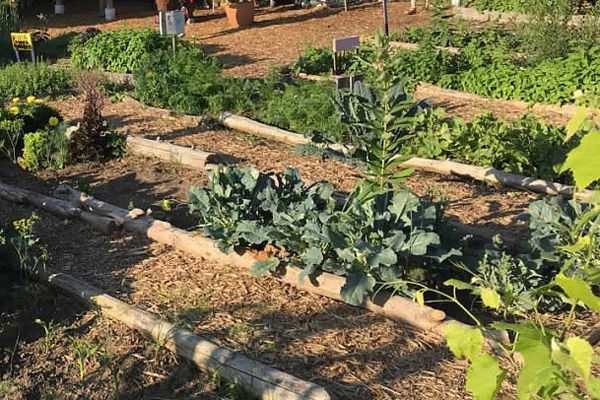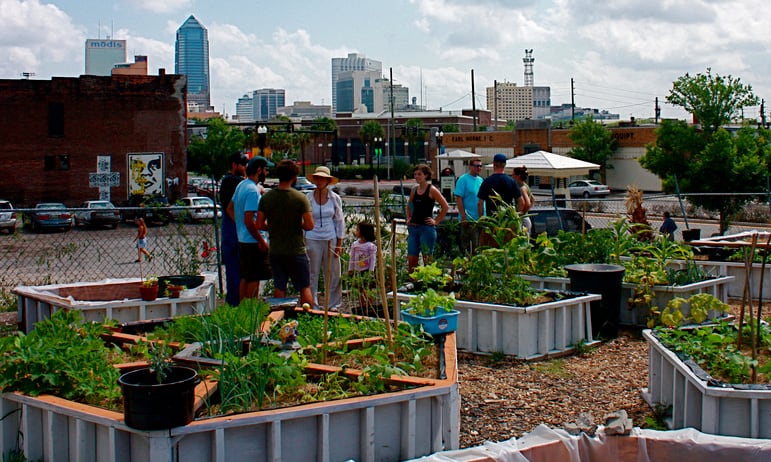City Blooming Fundamentals Explained
City Blooming Fundamentals Explained
Blog Article
6 Simple Techniques For City Blooming
Table of ContentsIndicators on City Blooming You Need To KnowSome Ideas on City Blooming You Should KnowAbout City BloomingOur City Blooming IdeasAn Unbiased View of City Blooming
Fascinated in growing food for sale in the City of Chicago? Below is a listing of regularly asked concerns relating to the policies and guidelines that growers must think about when planning a city farming project.
The zoning change does not change any type of various other codes handling composting, structure authorizations, acquiring or leasing City possessed property, service licenses or environmental contamination. There are existing codes that control these issues and they stay in full effect and may be relevant to your project. Neighborhood yards are typically possessed or handled by public entities, public organizations or community-based organizations and preserved by volunteers.
Urban farms grow food that is planned to be marketed, either on a nonprofit or for-profit basis. Due to their industrial function, metropolitan farms need an organization license.
How City Blooming can Save You Time, Stress, and Money.
The quantity of garden compost material can not go beyond 25 cubic lawns at any type of offered time according to the criteria in 7-28-715 of the City's Municipal Code. Since the soil at many new yard websites needs modifying, compost, soil, wood chips, or other products can be acquired to build or improve the expanding area.

If a building license is needed then the hoophouse will certainly be taken into consideration an accessory building. You can locate out even more concerning the building authorization needs by calling the Division of Buildings. The 25,000-square-foot dimension restriction is planned to stop a solitary neighborhood garden from controling an offered block or taking away from the block's existing household or business character.
The limitation does not apply to yards found in Public Open Room (POS) districts. Can there be even more than one community garden that is 25,000 square feet on a solitary block? Fencing is not called for, nonetheless, gardens that have big car park areas might be needed to set up fence or various other landscape design attributes.
The Best Guide To City Blooming
B1 & B2 areas need that all business use tasks be performed inside your home. Is secure fencing needed for metropolitan ranches? Fencings may be required, along with landscaping and testing, for particular auto parking locations and outside work or storage locations depending on place and the particular activity taking area.
Yes. Urban ranches need building licenses and zoning approvals before building. Other forms of city testimonial might be called for depending upon certain structures, activities, size, landscape design, licensing, public health and stormwater administration issues. A lot of these demands are determined in the project design or allowing procedure, nonetheless, the applicant may be responsible to independently determine details licenses or permits that may be called for.
Yes. The kind of permit is identified by what is happening at the site. The Division of Service Affairs and Customer Protection can aid identify the specific kind of business permit that's called for. Yes. Off street parking is needed for a lot of commercial projects in Chicago. The required number of car parking areas is based upon the number of workers working with website and not the square footage of the expanding area.
The smart Trick of City Blooming That Nobody is Talking About

An urban ranch can offer compost product produced on Our site site, nonetheless, the procedure must comply with the policies in 7-28-715 of the Chicago Municipal Code. Aquaponic systems are allowed inside on city ranches in several zoning districts.
Approximately 5 hives or colonies of honey may be maintained as an accessory usage. Nevertheless, beekeepers should sign up with the Illinois Division of Agriculture. To learn more about the suggested zoning change you might speak to the Department of Housing and Economic Development, Bureau of Preparation and Zoning at 312.744.8563.
Farming in cities and city areas An urban farm in Chicago. Urban agriculture describes different methods of growing. https://www.imdb.com/user/ur183982377/?ref_=nv_usr_prof_2, processing, and dispersing food in city areas. The term likewise relates to the area activities of animal husbandry, aquaculture, beekeeping, and cultivation in a city context. Urban agriculture is distinguished from peri-urban farming, which happens in backwoods at the edge of suburbs.
The Basic Principles Of City Blooming
, that seek to form social networks established on a common values of nature and community holism. These networks can establish by method of formal institutional support, becoming integrated right into neighborhood community planning as a "change town" activity for sustainable metropolitan growth.
The more direct access to fresh veggie, fruit, and meat products that may be become aware with city agriculture can boost food safety and security and food security while reducing food miles, resulting in lower greenhouse gas discharges, thus adding to climate change reduction. Some of the very first proof of urban agriculture originates from Mesopotamia.
Report this page